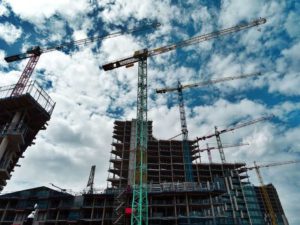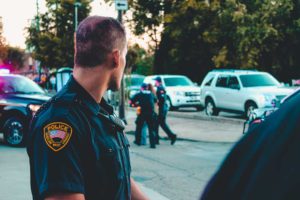The simple truth is that visible security cameras deter crime and let people know where the security is. Hidden security cameras are more subtle but might catch behavior people wouldn’t do when they know they’re watched. So, which is better for your business: hidden or visible types of CCTV cameras?
Increasingly, businesses are experimenting with hidden surveillance cameras as part of a layered defense strategy. These systems allow owners to observe natural behavior, verify incidents discreetly, and strengthen documentation for investigations. Used correctly, they complement visible deterrents rather than replace them.
Discreet Security Cameras
What works better – a hidden, discreet security camera system or a visible one? The answer to this question is entirely up to the specialized needs of each business and industry.
Pros and Cons of Hidden Security Camera Systems
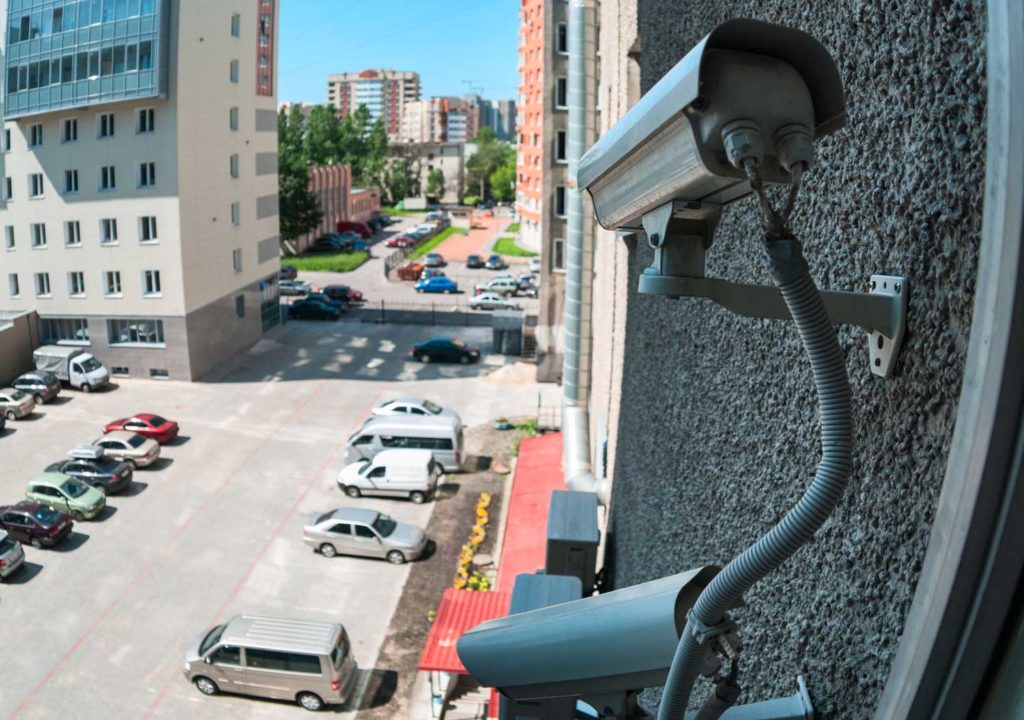
There are several reasons why people might prefer discreet outdoor security cameras or even invisible security cameras over more traditional, visible models.
The appeal of hidden video surveillance often lies in its subtlety. Unlike bulky wall-mounted units, small hidden CCTV cameras can be tucked into fixtures, ceilings, or décor, capturing evidence without drawing attention. This approach can be critical for internal theft investigations or compliance audits where discreet observation is necessary.
First, discreet surveillance cameras reduce the likelihood of tampering. When potential intruders don’t know where the cameras are —or even that cameras are present—they’re less likely to disable them.
Secondly, discreet cameras provide peace of mind while maintaining the aesthetics of your property. Large, conspicuous security systems may detract from the overall look, particularly for businesses with carefully curated exteriors. In contrast, hidden types of CCTV cameras blend seamlessly into their environment, allowing property owners to maintain security and visual appeal.
Finally, in spaces where visible cameras might make people uncomfortable, discreet surveillance cameras allow you to monitor your surroundings without the intrusive feeling that visible cameras often bring
For example, outdoor hidden security cameras can capture activity in parking areas or loading docks without alerting subjects to their presence, providing clear, candid evidence of vandalism, trespassing, or theft.
There is a time and place for discreet security cameras. Hidden video cameras can provide proof that a crime occurred. For example:
-
Construction sites can be victims of employee theft of tools or materials. A visible camera on a job site might dissuade the theft entirely, but a hidden one can identify potential thieves in a staff.
-
Retail stores often suffer petty theft by customers. Hidden cameras can save thousands of dollars in missing merchandise in a sprawling big box store.
-
Hidden cameras can capture an accident at a car dealership when a test driver or employee dings a fender backing into a parking lot.
-
If a customer slips and falls, a hidden camera can document true liability for that incident.
-
The same is true for an employee’s on-the-job injury. Hidden cameras could help a company avoid unnecessary liability in a workers’ compensation case.
-
Nursing homes can use hidden security camera systems to make sure each resident is properly cared for by staff.
In addition, secret video surveillance cameras can assist in monitoring restricted access zones like server rooms, laboratories, or document storage areas where sensitive information is handled. Their presence, while unseen, provides accountability without disrupting workflow.
Discreet security cameras are also less likely to be tampered with or vandalized. A hidden camera can also monitor employee productivity and performance. The list of use cases for these tools is long.
Despite many benefits, hidden security camera systems have legal ramifications. FindLaw points out that federal, state, and local rules may prohibit this type of activity being recorded. When monitoring employees, for example, some state privacy laws require signage that hidden camera surveillance is in progress.
Any business considering hidden surveillance cameras must balance security with compliance. Consulting legal counsel before deploying these systems ensures they align with privacy laws while maintaining ethical monitoring practices.
Federal wiretapping rules state businesses cannot surveil union activity or use these tools in a way “that is meant to intimidate current or prospective union members.” Other rules, depending on the location of the business, may prohibit discreet security cameras.
If the company follows the law, hidden security cameras for businesses are a valid way to protect assets by proving that a crime occurred.
Types of Discreet Security Cameras
When it comes to choosing a discreet camera system, there are various options available. These range from smaller versions of traditional security cameras to cameras that are designed to look like everyday objects. Let’s explore some of the hidden types of CCTV cameras that you might consider.
-
Miniature bullet cameras are like standard bullet cameras but are significantly smaller. Their compact size allows them to be easily concealed in a variety of locations, making them ideal for use as discreet outdoor security cameras.
-
Dome cameras are not necessarily "hidden; " due to their shape and size, they can be quite discreet. Dome cameras are often mounted on ceilings or walls and have a low profile that doesn’t attract much attention.
-
Spy cameras are designed to be completely covert and built to look like everyday objects such as clocks, smoke detectors, or light bulbs. These invisible security cameras are extremely difficult to detect, making them perfect for situations where you need the utmost discretion.
-
Pinhole cameras are so small that they can embed in walls, ceilings, or even in furniture. Pinhole cameras only require a tiny opening to capture footage, making them some of the most discreet surveillance cameras on the market.
-
Outdoor camouflage cameras can look like rocks, birdhouses, or other natural elements. These discreet outdoor security cameras are perfect for monitoring gardens, yards, or business exteriors without alerting anyone to their presence.
Today’s hidden CCTV camera technology is highly adaptable – some units operate wirelessly, while others use remote cloud connections for secure data transfer. Choosing between outdoor hidden security cameras and indoor options often depends on lighting conditions, viewing distance, and weather protection.
Each of these designs can serve as a secret camera system for different purposes: covert employee monitoring, anti-vandalism surveillance, or after-hours incident capture. By mixing visible and hidden surveillance cameras, businesses can cover more angles, both literally and strategically.
Should Security Cameras Be Visible?
Visible security cameras act as a deterrent for bad behavior. They might deter crime, but they also let people know where the security is. Hidden, discreet security cameras are more subtle but might catch behavior that people wouldn’t do when they know they’re being watched.
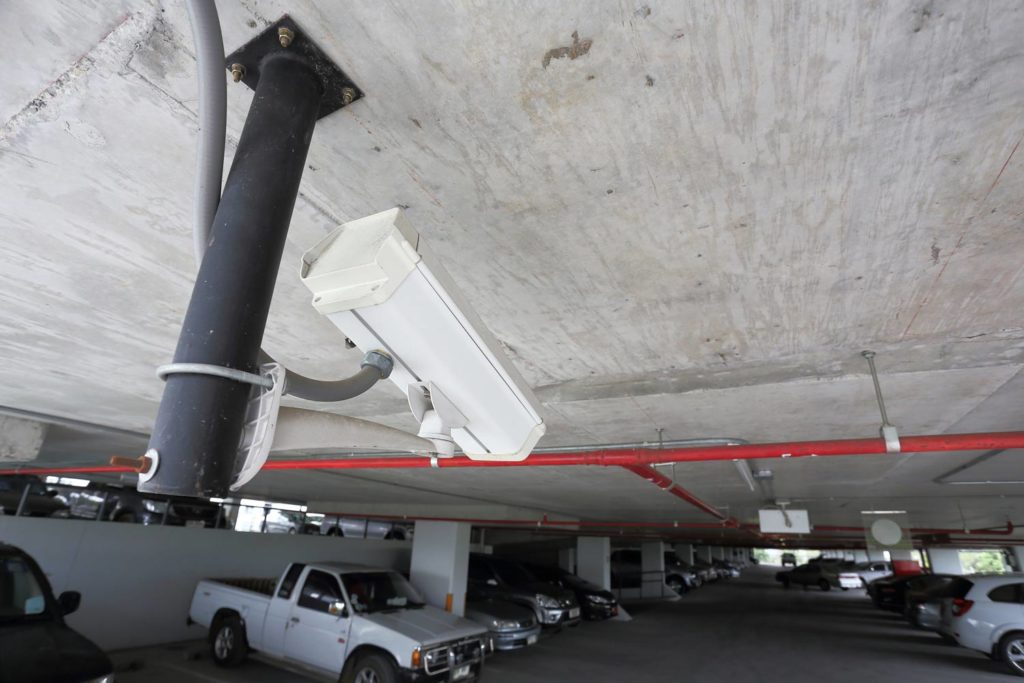
Modern Parking Surveillance Cameras
There is plenty of empirical evidence showing that visible security in the form of signage and cameras can deter crime:
- An analysis of 44 separate studies showed that visible evidence of video surveillance in parking lots, housing developers, and public transportation reduced crime by 51%.
- The University of North Carolina surveyed 422 burglars who stated visible evidence of security deterred them from pursuing criminal behavior.
- Another study showed that the visible presence of security cameras in one city contributed to a crime drop of 50%.
A more recent New York Times article says crime decreased by 13% in areas with CCTV.
Visible security cameras have two goals: Deterrence of crime and capturing evidence of activity. These tools work well for companies in a variety of settings and can be instrumental in protecting assets and promoting a sense of safety:
-
Remote gas and oil pipelines can use visible video surveillance cameras to show vandals or thieves that someone is always watching. In these environments, visible video surveillance cameras are a critical deterrent for vandals or thieves, showing them that you’re recording their behaviors.
-
These tools are useful for sprawling car dealerships with acres of hidden access points. Having an “eye in the sky” at every corner of these businesses can protect even the largest facilities from unwanted entry or egress. Visible cameras remind potential thieves and employees that you’re recording their activities, which encourages honest behaviors from everyone
-
What about monitoring the productivity of an after-hours cleaning staff? When management isn't physically present, having visible cameras can effectively keep off-hours workers accountable. Knowing they're under observation motivates staff to stay on task, complete their duties efficiently, and maintain the quality you expect. It also provides valuable footage should any work quality or performance discrepancies arise.
-
At Long-term parking and self-storage facilities, visible cameras provide an additional layer of customer comfort. When individuals leave their vehicles or personal belongings behind for an extended period, they want to know their property is safe. Visible surveillance deters potential thieves and reassures customers that they’ve placed their trust in a well-monitored, secure facility. For businesses, these cameras can reduce liability, as having footage can protect against false theft or damage claims
-
For neighborhood associations and gated communities, visible cameras help deter crime and offer peace of mind. Strategically placed cameras at entrances, exits, and common areas show that safety is a priority. Visible surveillance reinforces the sense of security within the community, providing both a psychological and practical barrier to criminal activity.
-
Vacant properties can use visible video cameras to track anything moving around abandoned buildings or open lots. A stray cat won’t care, but a trespasser might think twice if they can see the cameras.
There is no reason organizations shouldn’t leverage the right mix of hidden and visible cameras along with on-premises or remote monitoring and signage. Placing signs throughout the business deters crime, because people think they might be caught on camera. Having someone always watch the cameras will ensure that an event in progress won’t be missed.
For high-theft environments such as parking lots or warehouses, supplementing visible units with secret outdoor security cameras gives businesses a hidden safety net. If vandals disable the visible units, concealed backups can still capture usable evidence without interruption.
Security video surveillance tools are an excellent way to meet the challenges inherent in owning a business or property. There are many options, and knowing the right mix will help keep your business safe.
Types of Visible Security Cameras
When it comes to securing a property or business, the type of visible security camera you choose will impact the effectiveness of your surveillance system. Each type offers distinct advantages depending on your specific needs and environment.
-
Bullet cameras are the most recognizable type of security camera due to their elongated, cylindrical shape. They are typically mounted on walls or ceilings and point in a specific direction. Bullet cameras are especially effective in outdoor environments, such as parking lots, perimeters of buildings, or along access roads, where they monitor long distances. Their visible, deterrent nature often makes them ideal for discouraging criminal activity, as their presence signals that an area is watched.
Best for: Monitoring outdoor areas, entrances, and long corridors.
Advantages: Easy to install, weather-resistant, and highly visible to deter crime. -
Dome cameras have a protective dome-shaped cover that houses the camera. This camera type is typically installed indoors, although there are outdoor models. The main advantage of dome cameras is that they can cover a wide field of view, making them suitable for monitoring large spaces like warehouses, office floors, or retail stores. Their shape also makes it difficult for people to determine the exact direction the camera is pointing, which adds to their deterrence factor.
Best for: Indoor surveillance, such as in stores, offices, and hallways.
Advantages: Wide-angle coverage, durability, and resistance to tampering. -
PTZ cameras are highly versatile security cameras that allow for remote control of the camera’s pan (horizontal movement), tilt (vertical movement), and zoom functions. These cameras are ideal for large areas that need active surveillance, such as stadiums, parking lots, or expansive commercial properties. A single PTZ camera can cover a larger area than many stationary cameras because of its ability to move and zoom in on specific subjects or areas of interest. Operators can actively control these cameras to follow suspects or zoom in to capture crucial details.
Best for: Large outdoor areas or spaces requiring live monitoring.
Advantages: High flexibility, wide coverage, and the ability to zoom in on important details. -
Turret cameras, also known as eyeball cameras, are a hybrid between bullet and dome cameras. They are typically mounted on ceilings or walls and offer flexibility in their viewing angle. Unlike dome cameras, turret cameras don’t have a protective casing, which makes them slightly more compact and less prone to image distortion. Due to their versatility and ease of adjustment, turret cameras are a popular choice for both indoor and outdoor surveillance.
Best for: Indoor and outdoor spaces where discretion is not prioritized, but image quality is essential.
Advantages: Clear image quality, adjustable lens, and unobstructed viewing angles. -
C-mount cameras are unique in that they allow for the use of interchangeable lenses. This feature makes them highly adaptable for a range of surveillance needs. Whether you need to monitor large open areas or focus on specific, small sections of a facility, C-mount cameras can be equipped with the right lens to get the job done. Companies use these tools in industrial settings or high-security areas requiring specialized coverage.
Best for: Situations requiring flexibility in lens options, such as warehouses or manufacturing plants.
Advantages: Adaptable lens options and excellent for covering unique or hard-to-reach areas. -
Infrared cameras are the best option for surveillance in low-light or nighttime conditions. These cameras use infrared technology to capture clear images in the dark, making them ideal for 24/7 monitoring of outdoor areas or poorly lit spaces. IR cameras work well in parking lots, construction sites, and along the perimeters of properties where nighttime security is crucial. While they are highly visible, their ability to capture clear footage in darkness makes them one of the most effective deterrents against crime after hours.
Best for: Low-light or nighttime surveillance, such as outdoor perimeters or dark alleys.
Advantages: Clear footage in complete darkness and effective 24/7 monitoring. -
Wireless security cameras are increasingly popular due to their flexibility and easy installation. These cameras connect to a wireless network, allowing remote access and real-time monitoring through smartphones or computers. Wireless cameras are perfect for businesses or homeowners who want an easy-to-install system without extensive wiring. Although they are wireless, most of these cameras are still highly visible, providing the deterrent effect that comes with surveillance cameras.
Best for: Businesses that want quick and easy installation without complicated wiring.
Advantages: Easy installation, remote monitoring, and flexibility in camera placement. -
License plate recognition (LPR) cameras are specialized to capture clear images of vehicle license plates. These cameras are often used in parking lots, gated communities, or toll roads, where tracking vehicle entry and exit is essential. While LPR cameras may seem like a niche solution, they are highly visible and serve as a strong deterrent for vehicle-related crimes, such as car theft or illegal parking.
Best for: Monitoring vehicle traffic, parking lots, and secure entrances.
Advantages: Capture clear license plate images, enhancing vehicle security.
Finding the Right Mix of Security Tools for a Business
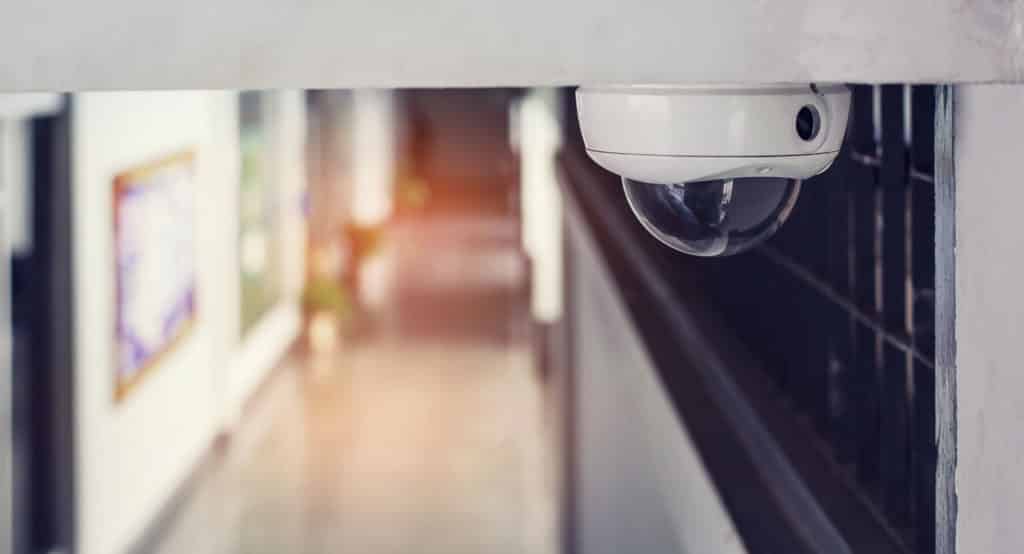
Crime is more likely to occur if criminals can hide their behavior. Video surveillance can help prevent “crimes of opportunity” that damage a business. How video security tools are used and whether cameras are visible or hidden depends on the business’s needs.
A visible security camera does more than record crime—data shows that these tools also prevent it from happening. A hidden video camera is there to prove criminal behavior is happening rather than prevent it. Both types of video surveillance can record activity to help law enforcement capture crucial evidence of crime. However, whether your business has hidden or visible security cameras, evidence suggests they won’t be nearly as effective unless they’re.
So, the answer to the question, “Should security cameras be visible?” depends entirely on your business.
Knowing the right mix of security protection for a business requires the steady hand and expert advice from the trained, experienced teams at Pro-Vigil. We custom design our security packages specifically for each business we serve. By working closely with our customers, we create the perfect security web of deterrence, detection, and response to fit your unique goals.
Contact Pro-Vigil today to find out how we can help your company.
FAQs
The main difference comes down to purpose and visibility. Visible cameras are meant to be seen – they deter wrongdoing by reminding people they’re being recorded. Discreet security cameras, on the other hand, are small or hidden, designed to capture natural behavior without alerting anyone.
Yes. Study after study shows that visible surveillance – even just signage – significantly reduces theft, vandalism, and trespassing. Criminals are far less likely to act when they see cameras trained on them.
Visible systems also help build trust with employees and customers by showing that security is a top priority. For maximum effect, place cameras in obvious, well-lit areas and combine them with motion lights or signage for a strong deterrent presence.
Discreet or hidden surveillance cameras are ideal when you need to monitor behavior without changing it. They’re particularly useful for:
- Investigating suspected internal theft or misconduct
- Monitoring sensitive areas like storage rooms or restricted labs
- Maintaining aesthetics in upscale retail, hospitality, or residential environments
Outdoor hidden security cameras can also capture activity in parking lots or loading docks without drawing attention, ensuring evidence is captured even when visible cameras are avoided or tampered with.
In most cases, yes – but there are limits. The legality of hidden CCTV cameras depends on your location and intent. Businesses can generally use them in public or common areas where there is no “reasonable expectation of privacy.” However, it is illegal to record in bathrooms, locker rooms, or private offices.
When in doubt, always consult legal counsel. You may also be required to post notices that hidden video surveillance is in use, depending on state or federal labor laws.
Absolutely, and this is often the best approach. Visible cameras act as the first line of defense, deterring most opportunistic crimes, while hidden surveillance cameras quietly capture anything that slips through.
In many businesses, visible systems are the foundation upon which secret video surveillance cameras or discreet units are later added. Visible cameras are straightforward, cost-effective, and highly adaptable. Their greatest advantage is psychological: they reduce the likelihood of crime simply by being seen.
For most exterior spaces, a combination works best. Visible bullet or dome cameras handle deterrence and long-range monitoring, while outdoor hidden security cameras can catch activity near fences, entrances, or blind spots.
Weather-rated models with infrared or thermal imaging are especially effective for 24/7 perimeter monitoring. Pairing these with remote video monitoring ensures nothing escapes notice, day or night.
Transparency and compliance are key. Ethical surveillance balances protection with respect for privacy. Businesses should:
- Post clear signage when cameras are in use
- Avoid placing cameras in private areas
- Secure and encrypt recorded footage
- Regularly review who has access to stored video
Used responsibly, hidden surveillance cameras protect both company assets and employee rights, strengthening trust rather than eroding it.
Start with your goals. If deterrence is your priority, visible systems make the most impact. If documentation, accountability, or discreet investigation is needed, hidden CCTV cameras or secret outdoor security cameras offer an advantage.
Most businesses benefit from a hybrid setup, with visible cameras to discourage unwanted behavior and discreet ones to confirm what’s really happening behind the scenes.



